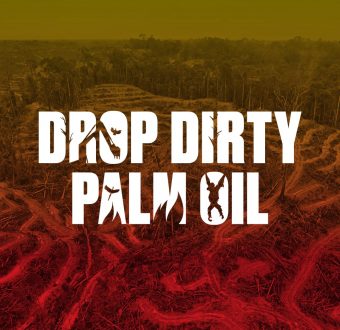When I first heard about the Greenpeace Activist Summit, I didnt immediately sign up to attend. My first thought was, “I have been to, put together, and even co-facilitated activist trainings before been there, done that.” The email sat in my inbox for some time before I got a call from Fiona, the Student Network Intern at Greenpeace who convinced me that it would least be fun to be out in the woods, in the beautiful state of Virginia, with like minded people, and that one could probably never go to too many trainings.
She was right. I left the 2012 Greenpeace Activist Summit with much more than indulgent memories of camaraderie and camping. I was invited to be part of the Training Team by attending a training for trainers pre-summit gathering (T4T), specifically I was asked to play around with some introductory and closing activities for the summit. When I met with David Pinsky, one of the organizers of the Summit, I was struck by the thoughtfulness and attention he gave to me for the seemingly straightforward exercises he was having me lead.
That thoughtfulness and intentionality was carried throughout the T4T, and into the Summit. The Greenpeace staff who trained myself and the other students who would run the Summit tried to impress upon us the most effective ways to communicate, engage and educate. They taught by example. We were asked us to think about what is effective communication and how we both engage and interact with those who we try to inform. Consistently the T4T trainings had moments for us to draw from our experiences, feelings, and reflections.
After a day and a half of T4T, all of the participants made their way from as far as Puerto Rico and San Diego to Prince Williams Forest, Virginia. Jet lagged and road weary, there was still an atmosphere of excitement as we set up camp the first night.The range of experiences that people had had with Greenpeace were from people on the Student Network Board and alumni of the Greenpeace Semester, to others like myself who had never been a part of anything with Greenpeace. Some participants looking to get involved in the environmental movement for the first time while others were running their own campaigns.
The trainings bridged many of those gaps. All four days were based on experiential learning – every training had a breakout session or role play. No matter how often you had canvassed, or talked to the media, you were asked to think about how you could do that more effectively. The trainings covered an amazing amount of skills from how to best build leadership, run a meeting, use social media, or escalate your campaign. When individuals introduced themselves, or told their personal stories, interacted in the trainings or talked around the campfire again and again people brought up their shared hopes, fears, desires and needs of themselves, their allies, their friends and our movement. Punctuating the student run activities, energizers, and trainings were call to action speakers and presentations.
Gabe Wisniewski spoke on the first night about Greenpeaces coal campaign, and the fight against climate injustices across the movement. Meena Hussain gave a presentation on how we can maximize our work using social media tools, and how Greenpeace has used those tools in the past. Emily James showed her film Just Do It: A Tale of Modern-day Outlaws, which brought us behind the scene of UKs environmental direct action movement, and challenged us to think about the direction our movement here in the US.
Lili Molina of Energy Action Coalitionpresentation on Anti-Oppression and Environmental Justice was the most pertinent. While the larger environmental movement has nailed down many of its tactics, it hasnt consistently empowered or included everyone into our movement. Our movement is increasingly becoming a youth movement, a more diverse movement, and one that is bringing more of the fight to frontline communities. Lili illustrated that we need to be a movement that is thoughtful in our inclusiveness, our sensitivity and our awareness of social and economic inequalities as we try to address regional and global environmental injustices.
The long weekend ended with a NVDA training by Greenpeaces James Brady which went over the uses of NVDA in the fight to protect the environment. It had been a long, hard, hot, fun, exciting week of leading and participating in trainings. As bittersweet as it was to say goodbye, everyone was really pumped to take everything we had learned back to our communities and share our education and experience with our peers.
– Lucas Burdick is aSophomoreat the College of the Atlantic


